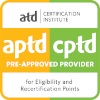Product Details
Topics Covered
- Dispute Settlement Negotiation (DSN)
- Deal Making Negotiation (DMN)
- BATNA
- Causes of personal and workplace conflict
- Conflict diagnosis
- Thomas-Kilmann Conflict Mode Instrument (TKI)
- Impediments to dispute resolution
- Active listening
- ZOPA
- Sacred and pseudo-sacred values
Key Features
- Mobile-friendly
- Audio-enabled
- Badge and credit-awarding
- Real-world case studies
- Fully accessible
- Games & Flashcards
- Expert-supported
- Video content
Course Preview
Course Description
Learning Outcomes
- Distinguish between Dispute Settlement Negotiation (DSN) and Deal Making Negotiation (DMN)
- Articulate the advantages and disadvantages of negotiation, compared to other methods of conflict resolution
- Explain the importance of BATNA in Dispute Settlement Negotiation
- Describe the most common causes of personal and workplace conflict
- Explain the steps involved in conflict diagnosis
- Describe the five conflict management styles identified by the Thomas-Kilmann Conflict Mode Instrument (TKI)
- Identify the main impediments to achieving a cooperative resolution, and explain how best to circumvent them
- Describe how to develop a strategy and interest assessment
- Explain the importance of active listening in the context of negotiation
- Define ZOPA, and explain its importance in Dispute Settlement Negotiation
- Explain how the ability to identify different negotiating currencies can help negotiators break a stalemate
- Distinguish between "sacred" and "pseudo-sacred" values
- Apply the principles of Dispute Settlement Negotiation to real-world examples
Notes
This course has an "Ask the Expert" feature, which submits your questions directly to an expert in the field you are studying. Questions are answered as quickly as possible and usually within 24 hours.
As an Accredited Provider, MindEdge offers for its learning events that comply with the Continuing Education and Training Standard.
Learners must achieve an average test score of at least 70% to meet the minimum successful completion requirement and qualify to receive credit. Learners will have three attempts at all graded assessments.



